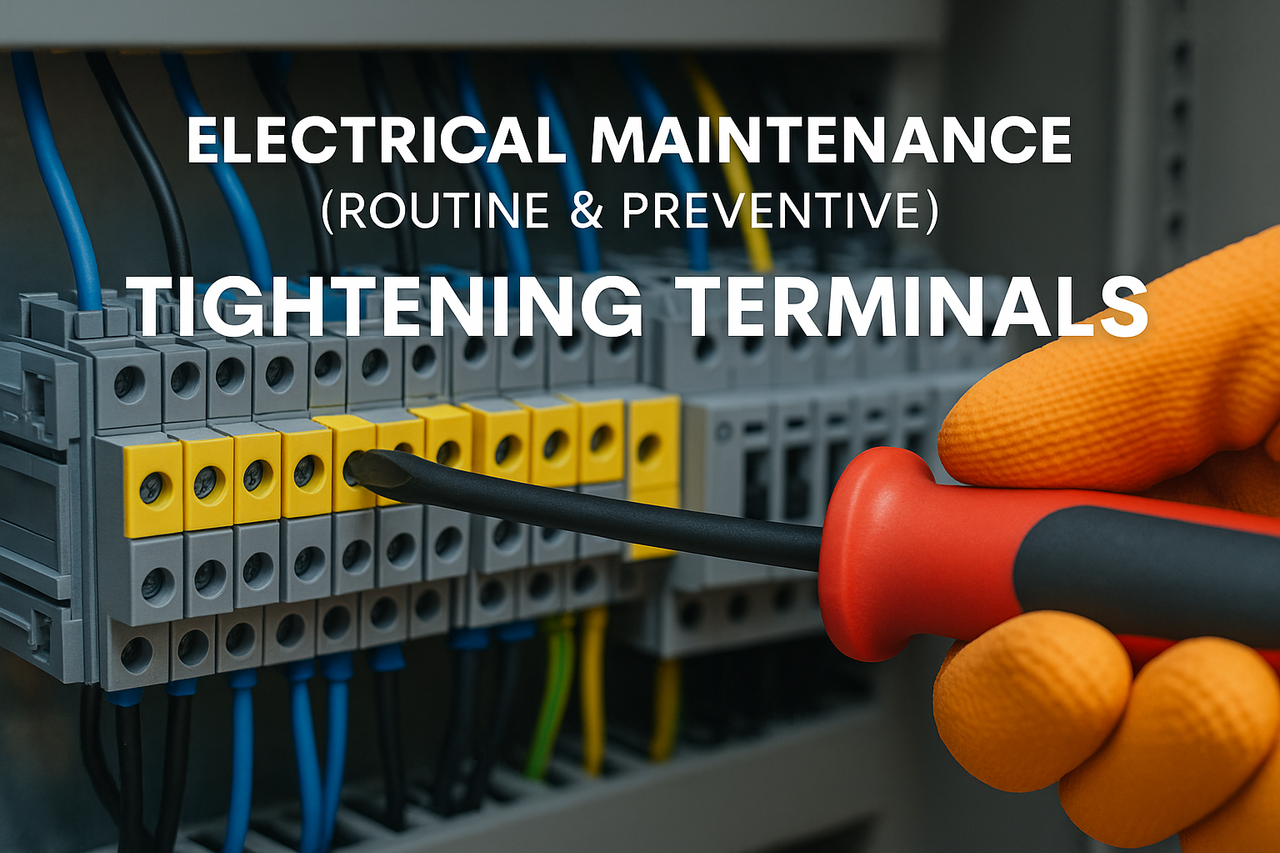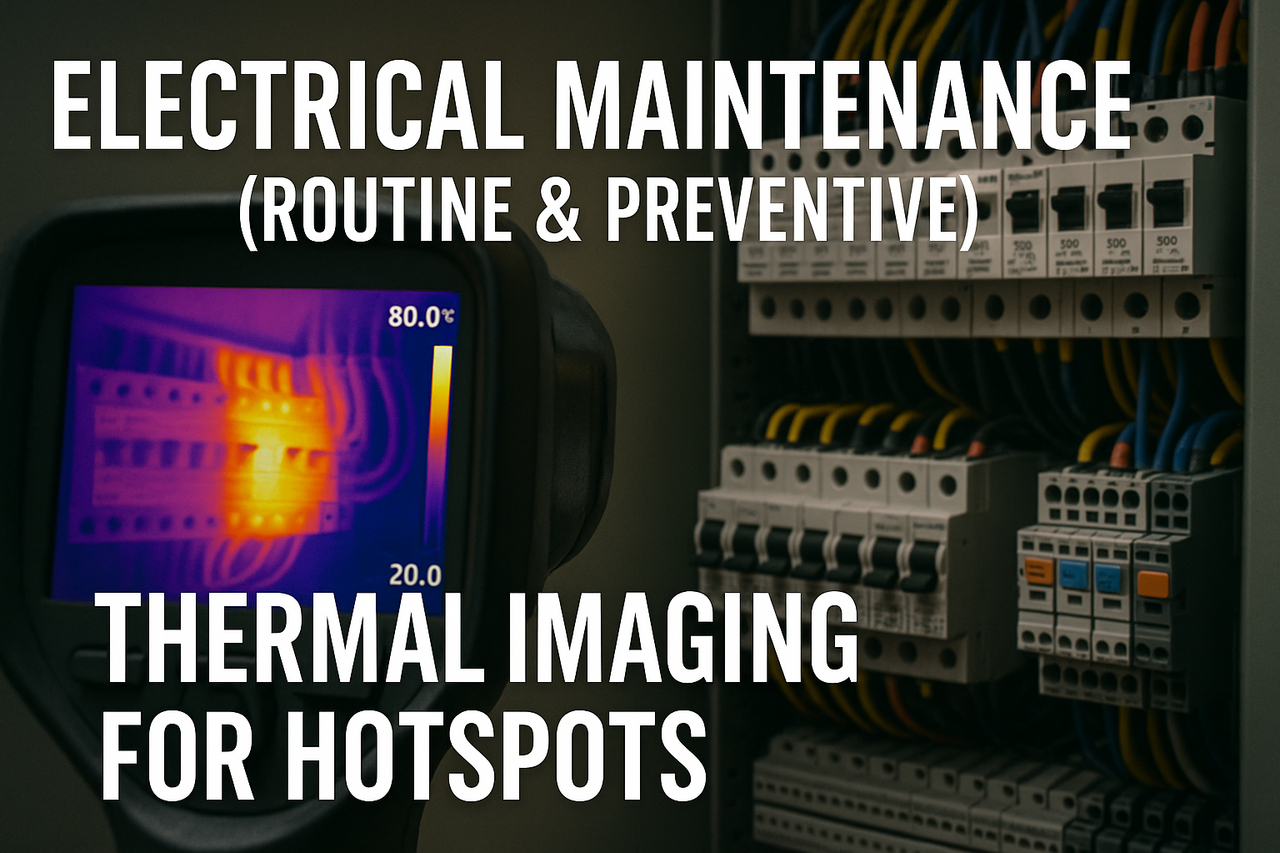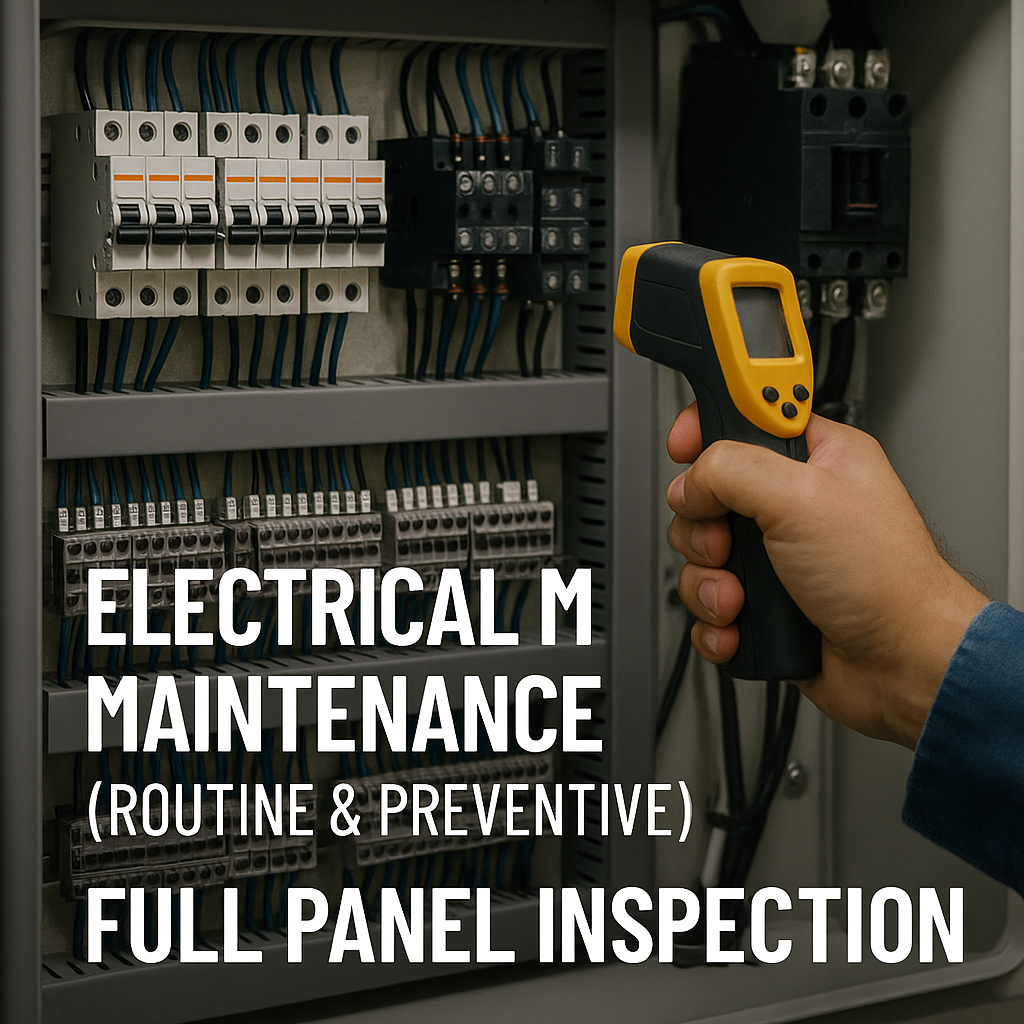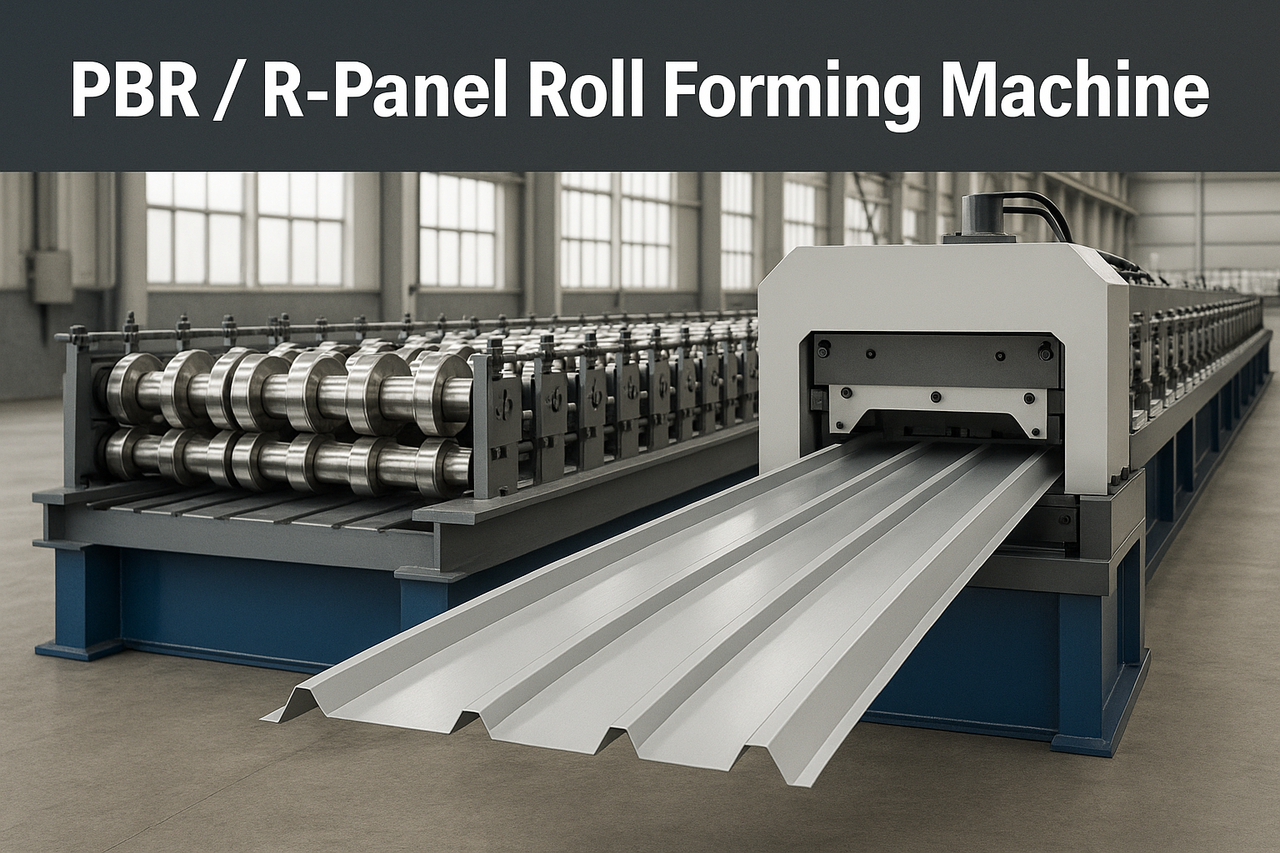
Posted on Monday, November 17, 2025
In roll forming machines, loose terminals are one of the most common and most damaging electrical issues. Between constant vibration, motor load fluctuations, heat cycles, and long production hours, terminals naturally loosen over time — especially inside PLC cabinets, VFDs, servo drives, power supplies, sensors, solenoids, and motor junction boxes.
A single loose terminal can cause:
Random machine stoppages
Flickering sensors
Inaccurate encoder pulses
VFD undervoltage/overcurrent faults
Motor overheating
Safety circuit failures
PLC resets
Punch and shear misalignment
Complete line shutdown
This blog explains why tightening terminals is essential preventive maintenance, how to do it correctly, and how Machine Matcher technicians perform professional torque-verified inspections.
Roll forming machines operate in conditions that naturally loosen electrical connections:
Even if the machine is brand new, terminals will eventually loosen — sometimes within weeks if not checked.
Loose terminals create high resistance, which leads to heat, arcing, instability, and electrical noise.
Loose terminals often cause intermittent faults — the hardest issues to diagnose.
Common symptoms include:
Sensors flicker ON/OFF
Encoder pulses drop
PLC inputs behave randomly
Communication errors on Ethernet/RS485/CANBUS
VFD “UV” (undervoltage)
VFD “OC” (overcurrent)
Servo “encoder error”
Servo “position fault”
Overheating
Low torque
Unexpected shutdown
Phase imbalance
E-stop circuits drop out
Guard interlocks flicker
Safety relay not latching
Random shutdowns
Inconsistent cycle times
Wrong cut length
Punch not activating
Shear mis-timing
All of these can be caused by one loose screw.
Machine Matcher technicians focus on the following high-risk areas.
Loose I/O terminals cause unstable machine logic.
We check:
Input terminals
Output terminals
Sensor commons
High-speed encoder inputs
Communication ports
Drives generate heat and vibration — perfect conditions for loose terminals.
We tighten:
L1/L2/L3 mains input
U/V/W motor output
Control terminals
Ground terminals
Servo terminals loosen faster than VFDs.
We tighten:
Motor phases
Encoder feedback
Brake connections
Control signals
A weak 24VDC supply is the #1 cause of PLC instability.
We check:
Input terminals
Output terminals
Neutral bars
Ground rails
Vibration from motors loosens terminals quickly.
We tighten:
Motor junction box terminals
Cable glands
Shielding clamps
Ground lugs
Loose power circuits create dangerous heat and arcing.
We tighten:
Line/Load lugs
Overload auxiliary terminals
Relay coils
Neutral and earth links
Loose terminal blocks cause inaccurate feedback.
We tighten:
Sensor signal wires
Encoder A/B/Z channels
Limit switch commons
Shielded cable drains
Incorrect tightening is just as dangerous as loose wiring.
Here is the correct method:
Every terminal has a specified torque rating (Nm).
Machine Matcher uses:
Torque screwdrivers
Torque wrenches
Calibrated tools
Under-torque = loose
Over-torque = cracked terminals
Never tighten under load.
Turn off:
Main isolator
Control circuits
VFD/servo power
If terminals show:
Blackened insulation
Burn marks
Discoloration
Melted plastic
— they must be replaced.
If copper strands break or insulation cracks, re-strip and re-terminate the wire.
Clear labels prevent incorrect wiring during future maintenance.
After powering the machine:
Monitor PLC inputs
Check VFD/servo stability
Verify encoder counts
Inspect motor load
Check sensor/encoder blocks
Inspect motor junction boxes
Check PLC terminals
Check relay boards
Tighten low-current signal wiring
Torque-verify all terminals
VFD input/output retorque
Servo drive retorque
Breaker/contactor retorque
Grounding & neutral bar tightening
Complete panel re-torque via service technician
Replace worn relays
Clean cabinet thoroughly
Backup all electrical parameters
Because loose terminals trigger:
Voltage drops
Noise
Overheating
Arcing
Intermittent signals
Component damage
Most electrical problems blamed on PLCs, sensors, or VFDs are actually caused by poor connections.
Proper terminal tightening dramatically improves:
Machine uptime
Cut accuracy
Servo/VFD health
Sensor reliability
Electrical safety
We provide:
Full panel inspection
Terminal torque verification
PLC/VFD/servo diagnostics
Motor load testing
Power supply testing
Preventive maintenance contracts
Electrical rewiring & upgrades
24/7 remote support
Worldwide on-site technicians
Every service includes:
Photos
Report
Fault history
Recommendations
Risk assessment
Loose terminals are one of the most overlooked but most dangerous electrical issues in roll forming machines. With proper routine and preventive maintenance, you can eliminate the majority of electrical faults before they occur.
Machine Matcher provides the global standard in electrical inspections, panel maintenance, diagnostics, and long-term reliability support.
Machine Matcher now offers full electrical technician services for roll forming machines — including diagnostics, rewiring, testing, encoder calibration, PLC programming, electrical audits, and preventive maintenance.
We support all machine types and all global regions.
Contact us today for immediate technical assistance or to schedule a full electrical inspection at your factory.
Looking for the right roll forming machine or expert guidance on your next project? Machine Matcher is here to help. Our global team provides 24/7 technical support, expert advice, and guidance on machine selection, setup, and maintenance—ensuring your operations run smoothly from day one.
With team members based worldwide—including the UK, USA, Middle East, and beyond—we are equipped to assist buyers across the globe. Whether you’re sourcing a single machine or upgrading an entire production line, our experts are ready to provide tailored solutions and support every step of the way.
Get in touch now and let Machine Matcher help you find the perfect roll forming machine for your business.
United Kingdom (Main Office)
Phone: +44 20 335 56554
United States
Phone: +1 407 559 7948
Mobile / WhatsApp: +44 7816 972935
Email: [email protected]

Posted on Monday, November 17, 2025
How Infrared Inspections Prevent Electrical Failures, Fires, and Unplanned Downtime

Electrical Maintenance (Routine & Preventive): Full Panel Inspection for Roll Forming Machines Guide
Posted on Monday, November 17, 2025
How to Prevent Downtime, Protect Components, and Keep Your Roll Forming Line Running at Peak Performance

32/1000 Box Profile Roll Forming Machine – Complete Guide & Specifications
Posted on Sunday, November 16, 2025
High-performance 32/1000 box profile roll forming machine for roofing and cladding. Full specifications, profiles, applications, pricing

PBR / R-Panel Roll Forming Machine – Complete Guide & Specifications
Posted on Sunday, November 16, 2025
PBR / R-Panel roll forming machine for roofing and wall cladding. Full specs, profiles, applications, pricing, and global buying guide. Built to order.
Copyright 2025 © Machine Matcher.